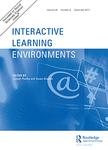版权所有:内蒙古大学图书馆 技术提供:维普资讯• 智图
内蒙古自治区呼和浩特市赛罕区大学西街235号 邮编: 010021

作者机构:Graduate Institute of Applied Science and Technology National Taiwan University of Science and Technology Taipei Taiwan Graduate Institute of Digital Learning and Education National Taiwan University of Science and Technology Taipei Taiwan Department of Library and Information Science Research and Development Center for Physical Education Health and Information Technology Fu Jen Catholic University New Taipei City Taiwan
出 版 物:《Interactive Learning Environments》 (Interact. Learn. Environ.)
年 卷 期:2024年第32卷第5期
页 面:1834-1859页
学科分类:0402[教育学-心理学(可授教育学、理学学位)] 0401[教育学-教育学] 04[教育学] 0812[工学-计算机科学与技术(可授工学、理学学位)]
基 金:Ministry of Science and Technology, Taiwan, MOST, (111-2410-H-011-007-MY3, MOST-109-2511-H-011-002-MY3) Ministry of Science and Technology, Taiwan, MOST
主 题:Bibliometric analysis robots science education STEM systematic review
摘 要:This research reviews 56 robots in science education (RSE) research articles published in SSCI (Social Sciences Citation Index) journals in the Web of Science (WoS) database. The analysis results showed that there were three clusters of RSE studies: robots in elementary science education, robot-based STEM activities, and robot-facilitated computational thinking. In terms of the research issues, more studies were conducted across-disciplines. Regarding thematic classifications, “general benefits of educational robots was the most frequently investigated issue, while “diversity and broadening participation, and “creativity and motivation were less frequently discussed. The most adopted research methods were quantitative and mixed methods, focusing on measuring learners’ cognition and affect. Most of the interventions in the empirical studies adopted pedagogical interventions. In terms of the interaction issue, LEGO was adopted the most, followed by self-made robots;moreover, robots frequently played the role of tools in science education. From the perspective of specific robotics content knowledge, “control (e.g. programming) comprised the majority. The most adopted learning strategy was project-based learning, followed by issue-based discussion. Regarding assessment issues, the most adopted evaluation approaches to evaluating students’ performance were questionnaires, observation, verbal interviews, and artifacts to assess the quality of learning activities. © 2022 Informa UK Limited, trading as Taylor & Francis Group.